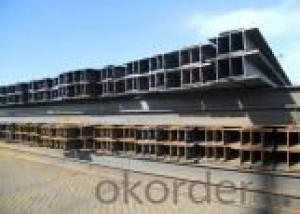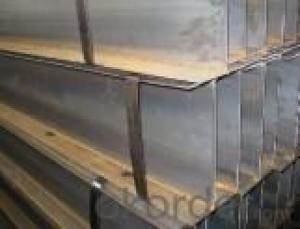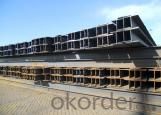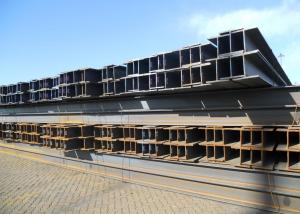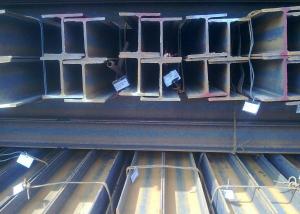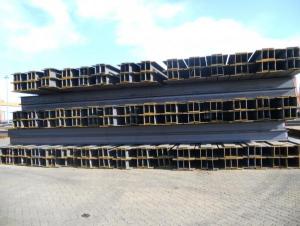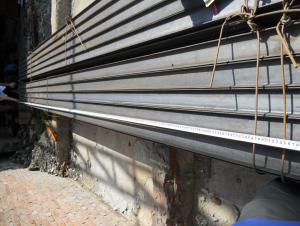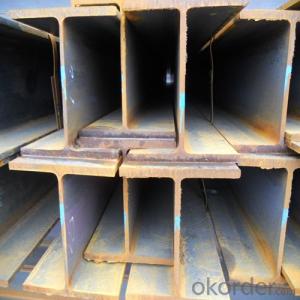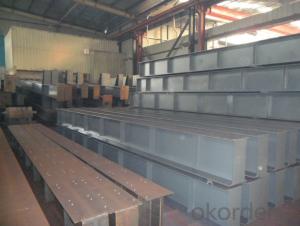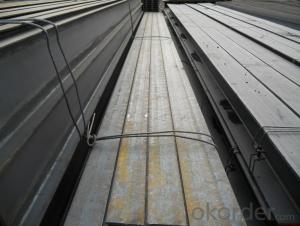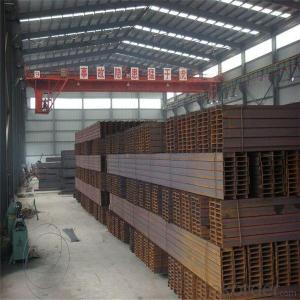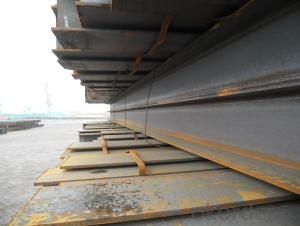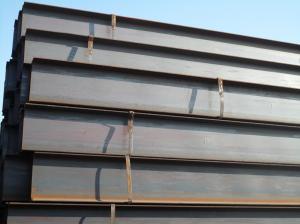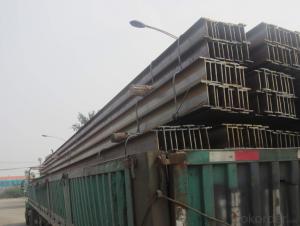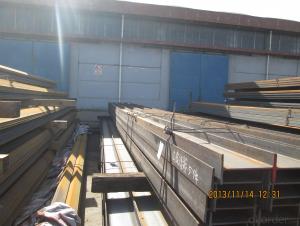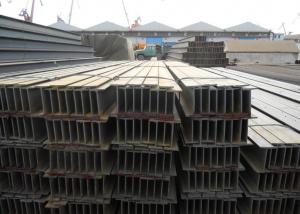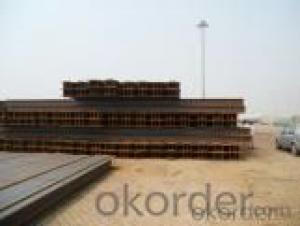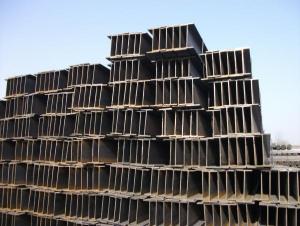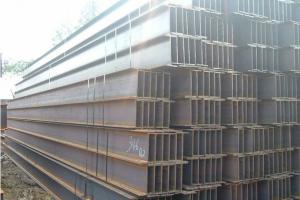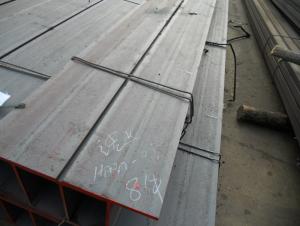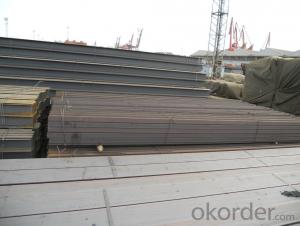H Beam Jis Standard With High Quality
- Loading Port:
- China Main Port
- Payment Terms:
- TT or LC
- Min Order Qty:
- -
- Supply Capability:
- -
OKorder Service Pledge
OKorder Financial Service
You Might Also Like
OKorder is offering H beam JIS Standard with high quality at great prices with worldwide shipping. Our supplier is a world-class manufacturer of steel, with our products utilized the world over. OKorder annually supplies products to European, North American and Asian markets. We provide quotations within 24 hours of receiving an inquiry and guarantee competitive prices.
Product Applications:
H beam JIS Standard with high quality are ideal for structural applications and are widely used in the construction of buildings and bridges, and the manufacturing, petrochemical, and transportation industries.
Product Advantages:
OKorder's H beam JIS Standard with high quality are durable, strong, and resist corrosion.
Main Product Features:
· Premium quality
· Prompt delivery & seaworthy packing (30 days after receiving deposit)
· Corrosion resistance
· Can be recycled and reused
· Mill test certification
· Professional Service
· Competitive pricing
Product Specifications:
1. Standard: JIS 3192
2. Grade: SS400 or Equivalent
3. Length: 10m, 12m as following table
4. Invoicing on theoretical weight or actual weight as customer request
5.Payment: TT or L/C
Size and Mass of H beam:
Size (mm) | Mass (Kg/m) | Size (mm) | Mass (Kg) |
100*100*6.0 | 16.9 | 148*100*6.0 | 20.7 |
125*125*6.5 | 23.6 | 150*150*7.0 | 31.1 |
150*75*5.0 | 14.0 |
1. Packing: it is nude packed in bundles by steel wire rod
2. Bundle weight: not more than 3.5MT for bulk vessel; less than 3 MT for container load
3. Marks:
Color marking: There will be color marking on both end of the bundle for the cargo delivered by bulk vessel. That makes it easily to distinguish at the destination port.
Tag mark: there will be tag mark tied up on the bundles. The information usually including supplier logo and name, product name, made in China, shipping marks and other information request by the customer.
If loading by container the marking is not needed, but we will prepare it as customer request.
FAQ:
Q1: Why buy Materials & Equipment from OKorder.com?
A1: All products offered byOKorder.com are carefully selected from China's most reliable manufacturing enterprises. Through its ISO certifications, OKorder.com adheres to the highest standards and a commitment to supply chain safety and customer satisfaction.
Q2: Can fit in the containers of 20fts the steel beams of 6M?
A2: No proble, we can put them into the containers in the form sideling.
Q3: The products are invoicing on theoritical weight or on actual weight?
A3: We can do it in both manners, according to the customers' request.
Images:
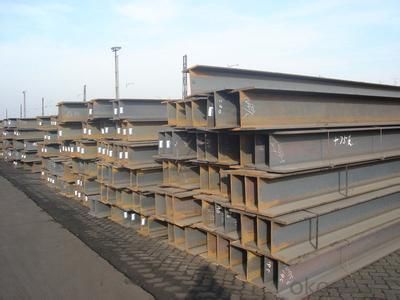

- Q: What are the different bracing methods for steel H-beams?
- There are several bracing methods for steel H-beams, including lateral bracing, diagonal bracing, and cross bracing. Lateral bracing involves adding bracing members perpendicular to the beam's web to provide support against lateral loads. Diagonal bracing involves adding diagonal members to connect the beam to columns or other structural elements to resist shear and overturning forces. Cross bracing involves adding diagonal members between beams to provide additional stability and prevent lateral movement. These bracing methods are commonly used to enhance the structural integrity and stability of steel H-beams in various construction applications.
- Q: How do steel H-beams perform in areas with high levels of humidity or moisture?
- Areas with high levels of humidity or moisture are well-suited for the performance of steel H-beams. These beams possess inherent strength and durability that make them resistant to corrosion and rust formation, even when exposed to humid environments. This resistance is primarily achieved through the application of a protective coating, such as galvanization or epoxy paint, on the steel surface. This coating acts as a barrier against moisture, preventing direct contact between the steel and the humid air. Furthermore, the design of H-beams facilitates efficient drainage of any accumulated water, thereby enhancing their effectiveness in wet conditions. As a result, steel H-beams are a suitable and reliable choice for use in areas with high levels of humidity or moisture.
- Q: What are the advantages of using steel H-beams?
- Using steel H-beams in construction and structural engineering projects offers several benefits. Firstly, steel H-beams are renowned for their exceptional strength and durability. Steel, being one of the most robust materials available, is perfectly suited for heavy loads and long-span structures. This makes H-beams ideal for large-scale projects like bridges, skyscrapers, and industrial buildings, where the ability to handle substantial weight and pressure is paramount. Secondly, steel H-beams provide design and construction versatility. Their unique H shape allows for easy connection and joining, enabling engineers and architects to create diverse structural configurations. This flexibility facilitates the design of complex structures and accommodates various building requirements. Moreover, steel H-beams can be readily cut and welded to fit specific project needs, making them highly adaptable and customizable. Another advantage of utilizing steel H-beams is their cost-effectiveness. Although steel may be costlier than some alternative building materials, its long-term durability and low maintenance requirements make it a cost-effective choice. Steel H-beams have a longer lifespan compared to timber or concrete beams, reducing the need for frequent repairs or replacements. Additionally, steel is resistant to pests, rot, and fire, further enhancing its longevity and reducing ongoing maintenance costs. Furthermore, steel H-beams offer excellent structural stability and rigidity. The shape and design of these beams distribute weight evenly along their length, minimizing deflection and ensuring structural integrity. This stability is crucial in preventing structural failures, particularly in projects that need to withstand high winds, earthquakes, or heavy machinery. Lastly, steel H-beams contribute to sustainable construction practices. Steel is a recyclable material, allowing for its reuse or repurposing after its initial use. This reduces the environmental impact of construction projects and promotes sustainability. Additionally, steel H-beams are typically fabricated offsite, resulting in reduced construction time and less disruption to the surrounding environment. In conclusion, the utilization of steel H-beams in construction offers advantages such as high strength and durability, design versatility, cost-effectiveness, structural stability, and contribution to sustainable construction practices. These factors make steel H-beams the preferred choice for engineers and architects when designing and constructing diverse structures.
- Q: Are Steel H-Beams resistant to UV radiation or fading?
- Steel H-Beams are not inherently resistant to UV radiation or fading. However, they can be protected from these effects through the application of a suitable coating or paint that offers UV resistance.
- Q: Can steel H-beams be cut or modified on-site?
- Yes, steel H-beams can be cut or modified on-site. H-beams are commonly used in construction projects and can be customized to fit specific measurements and requirements. On-site modification of H-beams may involve cutting the beams to a desired length, drilling holes for fasteners, or welding additional pieces to create connections or supports. However, it is important to note that proper safety precautions and equipment should be used when cutting or modifying steel beams on-site.
- Q: Can steel H-beams be used in architectural applications?
- Yes, steel H-beams can be used in architectural applications. H-beams are commonly used in construction and engineering projects due to their strength, durability, and versatility. In architectural applications, H-beams can be used to create structural frameworks for buildings, bridges, and other structures. They can provide support and stability, allowing for larger open spaces and flexible design options. Additionally, H-beams can be used for aesthetic purposes, adding an industrial or modern look to architectural designs. With proper engineering and design considerations, steel H-beams can be successfully incorporated into various architectural applications.
- Q: What are the common sizes of steel H-beams available in the market?
- The common sizes of steel H-beams available in the market vary depending on the specific requirements and applications. However, some standard sizes are commonly found in the market. These sizes typically range from 100mm to 1000mm in height, with widths varying from 50mm to 500mm. The lengths of steel H-beams can also vary, but they are often available in standard lengths of 6 meters, 9 meters, or 12 meters. These common sizes cater to a wide range of construction and structural needs, allowing for flexibility and adaptability in various projects.
- Q: What is the process of galvanizing steel H-beams?
- Galvanizing steel H-beams, also known as galvanization, is the method used to protect them from corrosion and rust. To ensure the adhesion of the zinc coating, the H-beams must first be cleaned to remove dirt, oil, or grease. There are various cleaning methods available, including chemical cleaning, abrasive cleaning, and high-pressure water cleaning. Once the beams are clean, they can be either dipped into a molten zinc bath or sprayed with a zinc-rich coating. This creates a protective layer on the surface of the H-beams through metallurgical bonding, which involves the intermingling of zinc and steel molecules to form a strong bond. After the galvanizing process, the H-beams are cooled and inspected for any defects or irregularities. The thickness, uniformity, and adherence of the zinc coating are checked to ensure they meet the required standards. If necessary, repairs or touch-ups are performed before the beams are deemed ready for use. Galvanized steel H-beams offer several advantages, including increased durability, extended lifespan, and enhanced resistance to corrosion. As a result, they are suitable for a wide range of applications, such as construction, infrastructure, and industrial projects. By undergoing the galvanizing process, steel H-beams are protected against environmental factors, such as moisture, humidity, and exposure to chemicals, ensuring their structural integrity and longevity.
- Q: What are the different types of steel H-beam connections used in industrial buildings?
- There are several different types of steel H-beam connections commonly used in industrial buildings. These connections are designed to provide stability and support to the overall structure. Here are some of the most commonly used types: 1. Welded connection: This is the most common type of connection used in industrial buildings. It involves welding the H-beam to other structural members or plates. Welded connections provide excellent strength and rigidity, making them suitable for heavy-duty applications. 2. Bolted connection: In bolted connections, the H-beam is fastened to other structural members using bolts and nuts. This type of connection allows for easier disassembly and reassembly, making it convenient for buildings that may need to be modified or relocated in the future. 3. Pinned connection: Pinned connections allow for rotation at the joint, providing flexibility to the structure. This type of connection is commonly used in situations where movement or vibration needs to be accommodated, such as bridges or buildings located in earthquake-prone areas. 4. Moment connection: Moment connections are designed to transfer both vertical and horizontal forces between the H-beams and other structural members. These connections provide enhanced stability and resistance against bending moments, making them suitable for structures with high loads or complex geometries. 5. Shear connection: Shear connections are used to transfer shear forces between the H-beams and other structural members. These connections are typically designed to resist lateral loads and provide stability to the structure. The choice of H-beam connection type depends on various factors, including the load requirements, structural design, and construction method. Engineers and designers evaluate these factors to determine the most appropriate connection type for each specific application.
- Q: Can steel H-beams be used for shopping complexes?
- Certainly, shopping complexes can utilize steel H-beams. Owing to their remarkable strength and ability to bear heavy loads, steel H-beams find frequent application in construction ventures. These beams offer structural reinforcement and stability, rendering them ideal for expansive structures like shopping complexes. Moreover, the simplicity and convenience of fabricating and installing steel H-beams make them a financially prudent option for such endeavors.
Send your message to us
H Beam Jis Standard With High Quality
- Loading Port:
- China Main Port
- Payment Terms:
- TT or LC
- Min Order Qty:
- -
- Supply Capability:
- -
OKorder Service Pledge
OKorder Financial Service
Similar products
Hot products
Hot Searches
Related keywords
